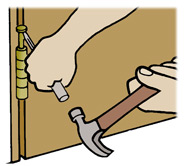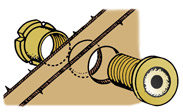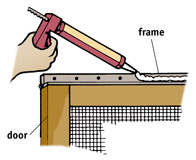 |
||
 |
||
|
|
| Replacing a door is a project within the capabilities of most do-it-yourselfers. Throughout the installation, take care not to damage or disturb the door frame and trim.
These instructions are general; always follow the manufacturer's directions for the specific product you are using. Your retailer will help you plan the project and advise you on what products are available to help. In this document you will find information about:
|
|
|
|
|
FIG. 1 - Use an old screwdriver or chisel to tap out the hinge pin. 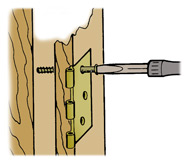 FIG. 2 - Attach the hinge leaves with screws that are long enough to reach well into the wall framing. 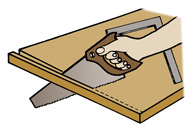 FIG. 3 - Trim the bottom of the new door with a fine-toothed saw to fit the opening. 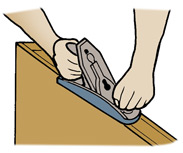 FIG. 4 - Use a jack plane to trim the door edges as needed. 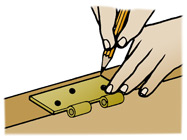 FIG. 5 - Use the hinge leaf as a template to mark the mortise locations on the door edge. 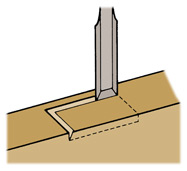 FIG. 6 - Use a sharp wood chisel to score the marked mortise edges. 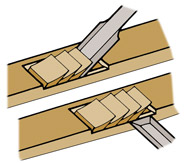 FIG. 7 - Make a series of cuts inside the scored line, then clear away the wood chips with the chisel. |

ENTRY DOORS
|
|
|
|
|
FIG. 8 - Peephole hardware fits through a hole bored in the door. |

THE LOCKSET
|
|
|
|
|
FIG. 9 - Apply a bead of non-hardening caulking compound behind the combination door frame. 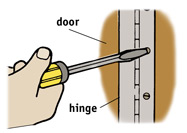 FIG. 10 - Use wood screws to attach the metal door frame to the opening.  FIG. 11 - The door closer uses either a hydraulic (top) or pneumatic (bottom) system. 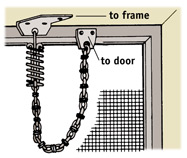 FIG. 12 - Install the retaining chain as illustrated. |

COMBINATION STORM/SCREEN DOORS
|
|
|
|

|

INTERIOR DOORS
|
|
|
|
|
TOOL AND MATERIAL CHECKLIST |
|
| Wood Screws (2" to 2-1/2") | Screwdriver |
| Hammer | Wood Chisel |
| Knife | Try or Combination Square |
| Fine-Toothed Saw | Block Plane |
| Jack Plane | Tape Measure |
| Hole Saw | Electric Drill |
| Drill Bits to Suit Lockset | Hand Brace |
| Carpenter's Level | Butt Gauge |
| Sandpaper | Long-Nose Pliers |
| Clear Spray Coating | Glue |
| Wood Putty | Wood Sealer |
| Non-hardening Caulking Compound | Caulking Gun |
| Lockset | Deadbolt |
| Peephole | Door Closer |
| Accessory Hardware | |
| Check your state and local codes before starting any project. Follow all safety precautions. Information in this document has been furnished by the National Retail Hardware Association (NRHA) and associated contributors. Every effort has been made to ensure accuracy and safety. Neither NRHA, any contributor nor the retailer can be held responsible for damages or injuries resulting from the use of the information in this document. | |

